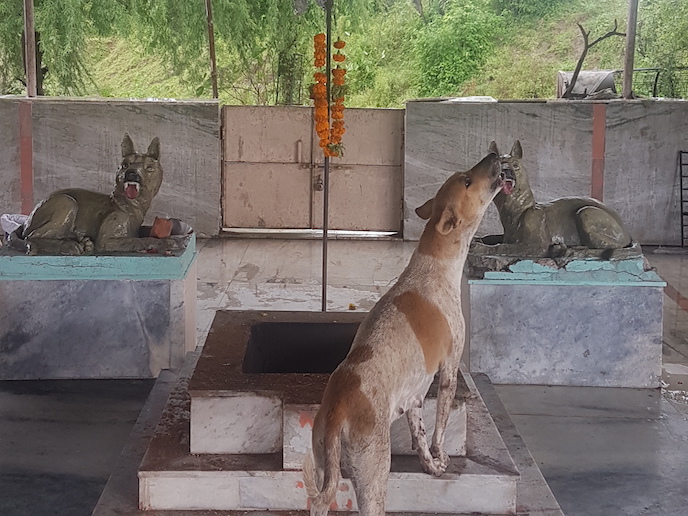The role culture and religion play in rabies prevention
Rabies is a progressive nervous system disease caused by a virus, usually transmitted through a bite from an infected animal, often domestic dogs. Once symptoms appear, it has the highest fatality rate of any viral disease(opens in new window). At least 30 million people are thought to be bitten by suspected rabid animals(opens in new window) annually, with an estimated 60 000 deaths, the majority in poor, rural Asian and African communities. Once bitten, people should reach a clinic for treatment within 24 hours. “Scientists have been working on rabies vaccines for almost 150 years, but this remains a health emergency because the communities most affected are without political voices and so are underserved by human and animal healthcare services,” says project supervisor Sarah Cleaveland. With likely the highest number of human deaths globally (around 21 000 per year), SAREE, a research project undertaken with the support of the Marie Skłodowska-Curie Actions programme(opens in new window), focussed on India to understand the role sociocultural factors play in disease prevention. At the core of the study were interdisciplinary One Health(opens in new window) approaches. “Culture and religion influence how people relate to dogs,” explains project coordinator Deborah Nadal. “We demonstrated that a successful rabies control programme must incorporate local knowledge and beliefs, with the active participation of communities.”
Mixed methodology reveals surprising insights
SAREE’s qualitative and quantitative study was conducted in the states of Gujarat(opens in new window) and Maharashtra(opens in new window). Gujarat has the only rabies-specific deity in India (Hadkai Mata, ‘the Mother of rabies’) and Maharashtra has a spot called Kuttarwadi (‘the well of the dog’) where people go when bitten by a dog, to drink the water for protection. In the Hadkai Mata temples, the researchers found that rabies is considered a ‘social’ disease. With few healers mentioning viral transmission, the majority believe that Hadkai Mata sends an enraged dog to bite people to correct their misbehaviour. The role of the dogs is therefore valued and so vaccination is disapproved of. The Kuttarwadi study found that most bite victims recognise the urgency of medical treatment, with 85 % going to drink the water at Kuttarwadi only after seeking postexposure prophylaxis. But alarmingly, of those who went to Kuttarwadi first, 70 % never sought medical attention due to a mix of belief in traditional healing, lack of trust in biomedicine or misunderstanding of the risk. The project also piloted contact tracing, which hadn’t been done with rabies in India before. As well as capturing specific data about rabies incidents, SAREE’s questionnaires for victims included ‘why’ questions, such as why people did or did not seek treatment. While contact tracing from hospital records was challenged by poor data, in the Hadkai Mata temples healers were willing to talk about rabies but unwilling to facilitate contact with victims. “More effective prevention programmes need more engagement work, which should extend to victims, making them more proactive in reporting bites rather than waiting to be contacted by public health authorities,” Nadal adds.
The importance of the One Health approach
Despite its long-standing institutional neglect, rabies is still nominally identified as a high-priority zoonosis by governments agencies, including European ones. “Many of our most pressing global health challenges are only likely to be tackled effectively through One Health approaches which integrate knowledge from across the biomedical, physical and social sciences,” concludes Nadal. The team are working to co-design, with local stakeholders, a rabies control strategy that accounts for the needs of rural, local contexts.







